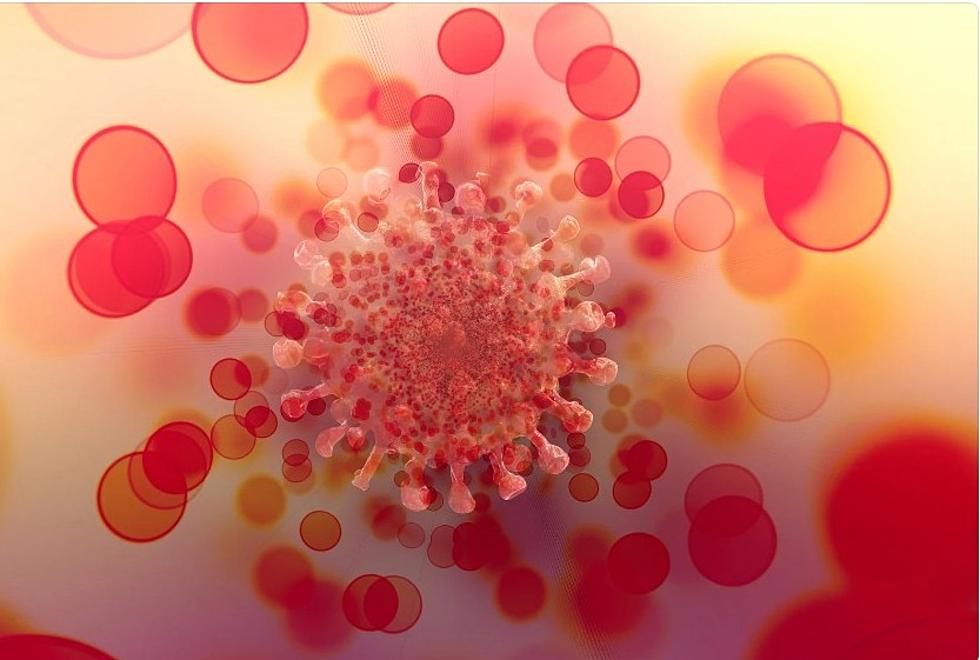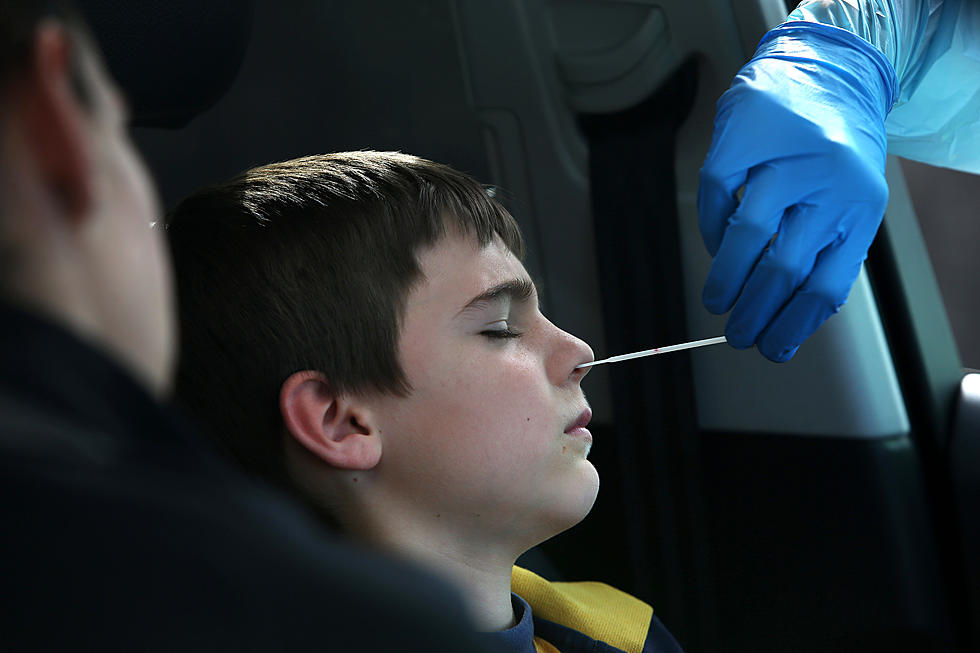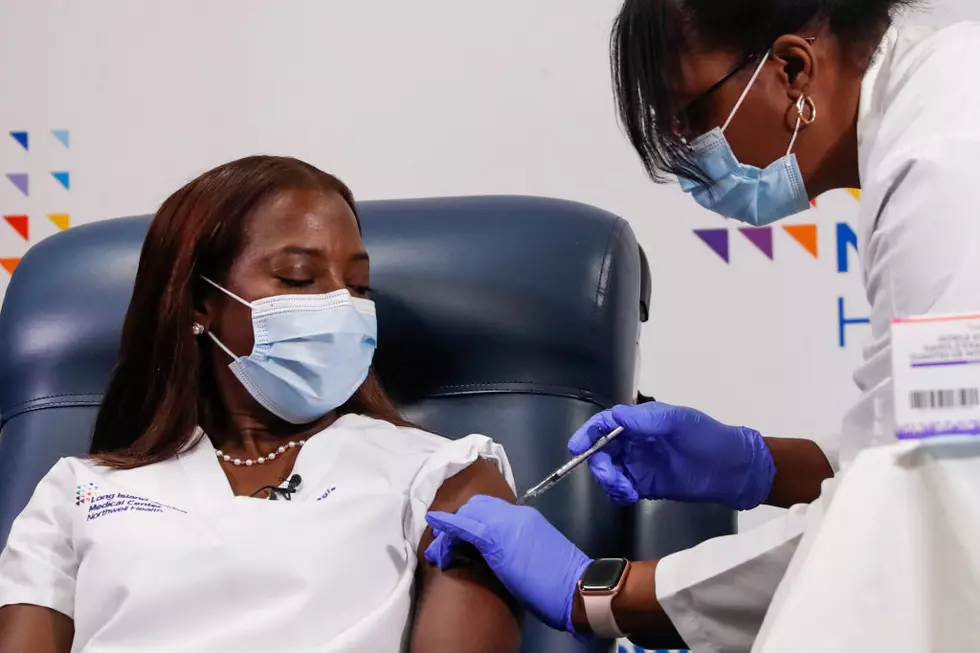
New Rules New Yorkers Must Follow When Malls Reopen
New York officials released a number of new guidelines malls and customers must follow, including customers wearing masks.
On Wednesday, in a somewhat surprising announcement, Gov. Andrew Cuomo announced beginning Friday, July 10, malls can open in regions that have entered Phase 4 of reopening. All regions in New York State besides New York City are in Phase 4 of the four-step reopening process.
In order to reopen, malls across the state must first implement an enhanced Heating, Ventilation and Air Conditioning - or HVAC - filtration system and follow proper ventilation protocols, officials say.
After Cuomo's announcement the CEO of the Pyramid Management Group Stephen J. Congel announced Pyramid Management Group malls in the Hudson Valley plan to reopen on Friday. Pyramid Management Group operates the Poughkeepsie Galleria, Galleria at Crystal Run in Middletown and Palisades Mall in Rockland County.
Below are guidelines malls and customers must follow in order to reopen, according to New York State Forward:
Physical Distancing
- In coordination with any tenants, ensure that workforce and customer presence is limited to no more than 50% of the maximum occupancy, inclusive of customers, who must maintain 6 ft. of separation from individuals who are not in their immediate party/household/family and, in all cases, must only be permitted entry into the mall and businesses within the mall if they wear an acceptable face covering; provided that they are over age 2 and able to medically tolerate one.
- Ensure 6 ft. distance between employees and customers, unless safety or the core activity requires a shorter distance (e.g. operating cash registers, moving merchandise). Employees must wear face coverings when they’re within 6 ft. of another person and any time they interact with customers.
- Monitor and control the flow of traffic into the mall to ensure adherence to maximum capacity requirements, and prohibit congregating and loitering by customers.
- Maintain sufficient employee/security presence to monitor traffic flow and ensure that groups adhere to social distancing limitations and do not congregate. Close or modify amenities where applicable, including:
- Closing food court seating areas by restricting access to tables and seating in such areas; provided, however, that food service establishments located in food courts may operate for take-out or delivery, in accordance with DOH’s "Interim COVID-19 Guidance for Food Services.”
- Closing common seating areas within the mall.
- Closing self-serve bars and samplers.
- Closing water fountains.
- Suspend valet services.
- Establish designated areas for deliveries, limiting contact to the extent possible.
Air Filtration & Building Systems
- Before occupants return to a building that has been entirely closed, complete pre-return checks, tasks, and assessments to ensure a healthy and safe environment These systems include but are not limited to mechanical systems, water systems, elevators, and HVAC systems.
- For malls that are greater than 800,000 square feet, ensure building HVAC system filtration meets the highest rated filtration compatible with the currently installed filter rack and air handling systems, at a minimum MERV-13, or industry equivalent or greater (e.g., HEPA), as applicable, and as certified and documented by a certified HVAC technician, professional, or company, ASHRAE-certified professional, certified retro-commissioning professional, or New York-licensed professional building engineer.
- If a mall greater than 800,000 square feet is unable to meet a building HVAC system filtration rating of MERV-13 or greater, malls must have a certified HVAC technician, professional, or company, ASHRAEcertified professional, certified retro-commissioning professional, or New York licensed professional building engineer certify and document that the currently installed filter rack and air handling system would be unable to perform to the minimum level of heating and cooling that it was otherwise able to provide prior to the COVID-19 public health emergency if such a high degree of filtration (i.e., MERV-13 or greater) was installed. Further, malls must submit such documentation to DOH for review and approval to operate at a lesser filtration rating of MERV-11 or MERV-12 with additional ventilation and air filtration mitigation protocols. In all instances, however, Responsible Parties must maintain a building HVAC system filtration rating of, at least, MERV-11.
- In addition, malls that are unable to meet a filtration rating of MERV-13 or greater must put in place additional ventilation and air filtration mitigation protocols per CDC recommendations, where appropriate, including:
- Increasing ventilation rates and outdoor air ventilation to the extent possible;
- Keeping systems running for longer hours (e.g., 24/7 if possible);
- Disabling demand-controlled ventilation, where reasonable, but still maintaining systems that increase fresh air supply (e.g., conference or meeting rooms);
- Opening outdoor air dampers to reduce or eliminate recirculation to the extent possible; • Considering the installation of appropriately designed and deployed ultraviolet germicidal irradiation (UVGI) to deactivate airborne virus particles;
- Sealing edges of the filter to limit bypass; and/or
- Regularly inspecting systems and filters to ensure they are properly operating, and filters are appropriately installed, serviced and within service life.
- For malls that are less than 800,000 square feet, ensure building HVAC system filtration meets the highest rated filtration compatible with the currently installed filter rack and air handling systems, at a minimum MERV-11, or industry equivalent or greater (e.g., HEPA), but ideally MERV-13, as applicable, and as certified and documented by a certified HVAC technician, 8 professional, or company, ASHRAE-certified professional, certified retro-commissioning professional, or New York-licensed professional building engineer.
Protective Equipment
- Employees must wear face coverings when they are within 6 ft. of other individuals and any time they interact with customers (e.g. providing information to customers, ringing up a purchase).
- Employers must provide employees with an acceptable face covering at no-cost to the employee and have an adequate supply of coverings in case of replacement.
- Acceptable face coverings include but are not limited to cloth (e.g. homemade sewn, quick cut, bandana) and surgical masks, unless the nature of the work requires stricter PPE (e.g. N95 respirator, face shield).
- Face coverings must be cleaned or replaced after use and may not be shared. Employers must train employees on how to put on, take off, clean and discard PPE, including face coverings.
- Limit the sharing of objects (e.g. tools, registers, and vehicles) and discourage touching of shared surfaces; or, when in contact with shared objects or frequently touched areas, wear gloves (trade-appropriate or medical); or, sanitize or wash hands before and after contact.
- Require employees to wear gloves while handling any food products.
Hygiene, Cleaning, and Disinfection
- Adhere to hygiene and sanitation requirements from the Centers for Disease Control and Prevention (CDC) and Department of Health (DOH) and maintain logs on site that document date, time, and scope of cleaning and disinfection.
- Provide and maintain hand hygiene stations, including handwashing with soap, water, and paper towels, as well as an alcohol-based hand sanitizer containing 60% or more alcohol for areas where handwashing is not available/practicable.
- Make hand sanitizer available throughout the mall for use by employees and customers.
- Conduct regular cleaning and disinfection of the mall and more frequent cleaning and disinfection for highrisk areas used by many individuals and for frequently touched surfaces. Refer to Department of Environmental Conservation (DEC) products identified by the Environmental Protection Agency (EPA) as effective against COVID-19. Sanitize hands before and after transferring a load (e.g. truckload) of merchandise.
- Put in place measures to limit the sharing of objects (e.g. registers), as well as the touching of shared surfaces; or, require employees to wear gloves (tradeappropriate or medical) when in contact with shared objects or frequently touch surfaces; or, require employees to sanitize or wash their hands before and after contact.
Communication
- Affirm you have reviewed and understand the state-issued industry guidelines, and that you will implement them.
- Post signage inside and outside of the mall to remind personnel and customers to adhere to proper hygiene, social distancing rules, appropriate use of PPE, and cleaning and disinfection protocols.
- Conspicuously post completed safety plans on site
Screening
- Implement mandatory health screening assessment (e.g. questionnaire) for employees and, where practicable, customers (but do not mandate for customers or delivery personnel), asking about (1) COVID-19 symptoms in past 14 days, (2) positive COVID19 test in past 14 days, and/or (3) close or proximate contact with confirmed or suspected COVID-19 case in past 14 days. Review all responses collected by the screening process on a daily basis and maintain a record of such review.
- Individuals who screen positive for COVID-19 symptoms must not be allowed to enter the workplace and must be sent home with instructions to contact their healthcare provider for assessment and testing.
- Immediately notify the state and local health department of any positive COVID-19 test result and cooperate with health department contact tracing efforts.
- Provide for the cleaning and disinfection of exposed areas in the event of a positive case, with such cleaning and disinfection to include, at a minimum, all heavy transit areas and high-touch surfaces (e.g. bathrooms, door knobs, vending machines).
KEEP READING: What were the most popular baby names from the past 100 years?
More From Hudson Valley Post









